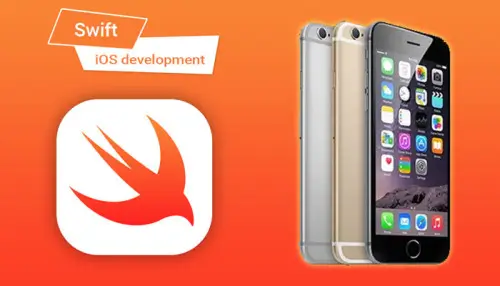Introduction:
Xcode is the Integrated Development Environment (IDE) mostly used to design and develop an iOS app. Xcode includes a swift compiler, interface builder and other required tools to upload your app to the app store. Now Xcode contains everything you need to build an iOS app. The only issue is that it is only compatible with Mac OS. Another issue is that you can’t buy any PC with Mac OS on it because unlike Windows, Apple doesn’t let you license its OS with other manufacturers. When you purchase an OS X, you can license to only run this OS on Apple hardware. This limits you to develop apps that run only on a Mac.
Now the most common perception around is that Mac systems are mandatory to design and develop iOS applications. However this is not true, there are different ways and means by which one can build iOS applications on Windows systems.
Let’s discuss the ways through which you can develop an ios app on Windows PC.
1. Build Your Own “Hackintosh”
2. Take a Mac System on Rent in Cloud
3. Use Virtualbox and Install Mac OS on Your Windows PC
4. Code with Swift Sandbox
5. Create iOS apps on windows with Cross-Platform tools
6. Third-Party Solutions
1. Build Your Own “Hackintosh”
Just try to install OS X on a Windows PC. Apple enthusiasts have always enjoyed the integrated user experience, design, and interconnectivity the tech giant has offered.
A Hackintosh is a PC that runs Mac OS. It is the same as installing an OS X in a Virtual machine, likewise, you can install OS X as a bootable OS to your PC.
2. Take a Mac System on Rent in Cloud
You may consider services like Mac-in-Cloud and Mac-Stadium to offer affordable rent-a-Mac products. You can connect with those cloud-based Macs using a Remote Desktop Connection (RDP).
Windows provides a stock Remote Desktop you can utilize, thus do most Linux OS. Once you’re signed in, you can install Xcode.
3. Use Virtualbox and Install Mac OS on Your Windows PC
The easiest way to develop iOS apps on windows is via a virtual machine. A virtual machine will create an environment where any operating system can run in like it’s running in the same hardware itself. This functionality is called virtualization as it allows you to run Windows on Linux and even Windows on OS X.
To run Mac OS on a virtual machine, you need two things:
- A copy of OS X as a virtual image file or an installer.
- A virtual machine tool like VirtualBox or VMWare.
You can acquire a duplicate of OS X by downloading it from the App Store. You can likewise find installers from different sources on the internet.
However, note that utilizing Mac OS on non-Apple hardware is against Apple’s End User License Agreement (EULA).
4. Code with a Swift Sandbox
IOS App Development is all about familiarizing yourself with Xcode. Once you’re comfortable there, you can develop your app with the tools mentioned above which will help you to get started on the right path.
Swift is an open-source language, which implies that you can effectively run it on any hardware. Accordingly, you can likewise run it in your browser too – if the language is ported to Chrome, Safari, or Firefox.
5. Create iOS Apps on Windows with Cross-Platform Tools
Cross-platform tools are really useful and they enable you to code your apps once and export it to iOS and Android. That could cut your application development time and cost into the half. A few cross-platform tools enable you to create iOS applications on a Windows PC or allow you to compile the application if there’s a Mac within your network.
General perception against cross-platform tools is that they offer restricted access to and support for smartphone hardware, and are not “smart” vis-a-vis counterparts. Remember that any cross-platform tool will expect you to compose platform-specific code at a certain point, particularly if you need to code custom features.
6. Third-Party Solutions
Lastly, there are many third-party solutions that you can use to do iOS development on Windows.
You won’t be using Xcode in these solutions but you’ll be able to generate an app that can run on iOS devices.
Check out these great Xcode alternatives:
1. React Native: Use JavaScript to build native mobile apps.
2. Xamarin: Use C# to build a mobile app that you can deploy natively to Android, iOS, and Windows.
3. Appcelerator: Build native mobile apps using JavaScript.
4. PhoneGap: Build hybrid cross-platform mobile apps using HTML, CSS, and JavaScript.
iOS app development is all about familiarizing yourself with Xcode. Once you are knowledgeable there, you can develop the app with the tools mentioned above which will help you get started on the right path.
In case of any further information, you can write to us at info@oditeksolutions.com.







